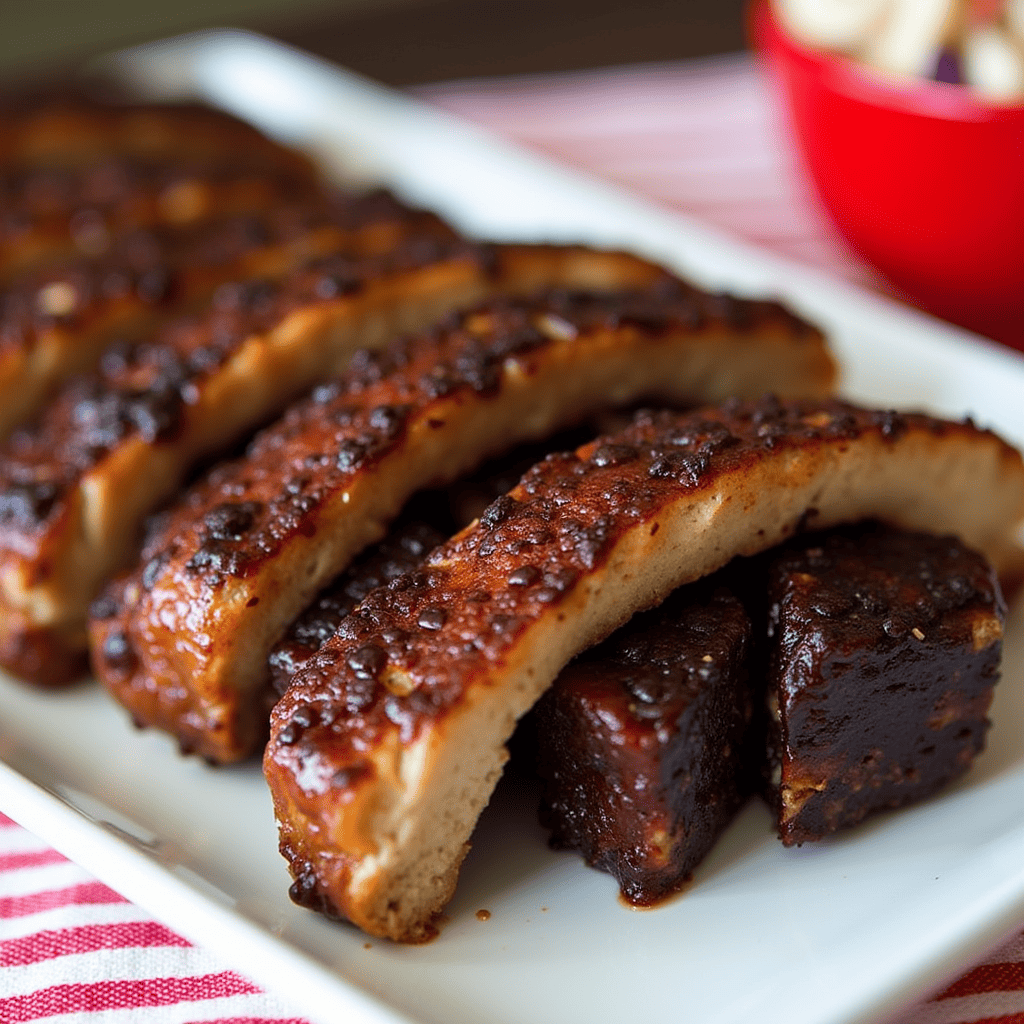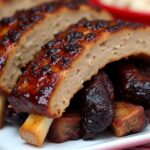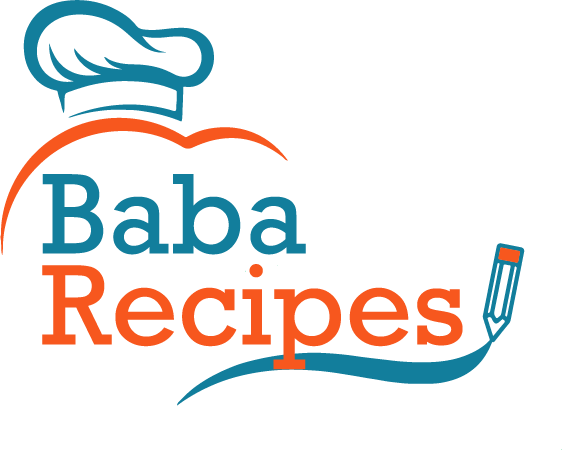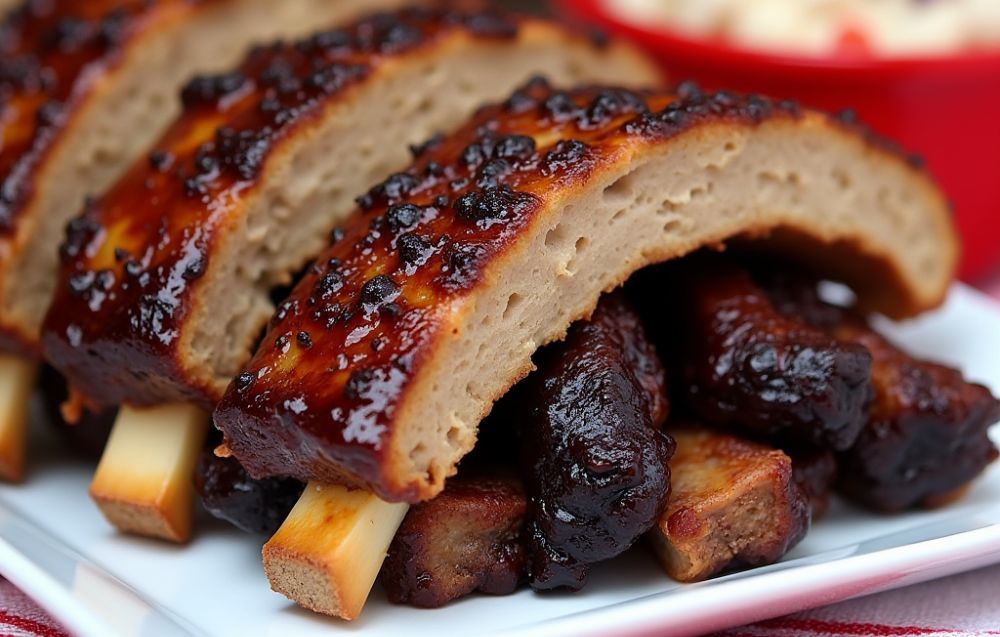There’s something magical about the smell of smoky BBQ baby back ribs wafting through the air. It’s the kind of aroma that makes neighbors peek over the fence and friends suddenly remember they haven’t visited in a while. But let’s be honest—making perfect smoky BBQ baby back ribs isn’t just about throwing meat on a grill and hoping for the best. It’s an art, a science, and a little bit of love all rolled into one. Whether you’re a BBQ newbie or a seasoned pitmaster, this guide will walk you through everything you need to know to create ribs so good, they’ll have people talking for weeks.
Table of Contents
Introduction to Smoky BBQ Baby Back Ribs
Let’s start with the basics. Baby back ribs are cut from the top of the rib cage, right where the ribs meet the spine. They’re smaller, leaner, and more tender than spare ribs, which makes them a favorite for BBQ enthusiasts. But what really sets smoky BBQ baby back ribs apart is the process. Smoking ribs low and slow over wood infuses them with a deep, rich flavor that you just can’t get from a quick grill session.
“Smoking ribs is like a slow dance—it’s all about patience, rhythm, and letting the flavors come together in perfect harmony.”
But why are baby back ribs so special? Well, they’re like the filet mignon of the rib world. They’re tender, flavorful, and just the right size for a hearty meal. Plus, they’re versatile. You can go sweet, spicy, tangy, or even a little bit of everything. The possibilities are endless, and that’s what makes them so fun to cook.
Why Baby Back Ribs Are a BBQ Favorite
So, what’s the big deal about baby back ribs? For starters, they’re incredibly forgiving. Even if you’re not a BBQ pro, you can still turn out a pretty decent rack of ribs with a little effort. They’re also packed with flavor. The meat is close to the bone, which means it absorbs all the smoky goodness from the wood and the spices from your rub.
Another reason people love baby back ribs? They’re quick to cook compared to other cuts. While brisket might take 12 hours or more, baby back ribs are usually done in 4-6 hours. That makes them perfect for a weekend BBQ or even a weeknight dinner if you’re feeling ambitious. If you’re looking for another quick and delicious recipe to pair with your ribs, check out this Best Broccoli Cauliflower Salad Recipe. It’s the perfect side dish to balance out the richness of the ribs.
The Art of Smoking Ribs: What Makes It Special?
Smoking ribs isn’t just cooking—it’s an experience. It’s about taking your time, letting the smoke work its magic, and creating something that’s more than just food. It’s a labor of love. The low temperature and slow cooking process break down the tough connective tissues in the meat, turning them into melt-in-your-mouth goodness.
But here’s the thing: smoking ribs isn’t just about the meat. It’s about the wood, the rub, the sauce, and even the weather. Yes, the weather! A windy day can affect how your smoker performs, and a humid day can change how the smoke adheres to the meat. It’s all part of the adventure. If you’re a fan of slow-cooked dishes, you might also enjoy this Best Slow Cooker Baked Apples recipe. It’s another example of how low and slow cooking can transform simple ingredients into something extraordinary.
Essential Tools and Ingredients for Smoky BBQ Baby Back Ribs
Before we dive into the step-by-step process, let’s talk about the tools and ingredients you’ll need. Think of this as your BBQ toolkit. Without the right gear, you’re just playing with fire (literally).
Must-Have BBQ Tools for Perfect Ribs
First things first: you need a good smoker. Whether it’s a traditional offset smoker, a pellet smoker, or even a charcoal grill with a smoking attachment, the key is consistency. You want something that can maintain a steady temperature for hours.
Next up, you’ll need a meat thermometer. This is your best friend when it comes to smoking ribs. It takes the guesswork out of the equation and ensures your ribs are cooked to perfection. Other essentials include:
- Tongs: For flipping and handling the ribs without piercing them.
- A basting brush: For applying that delicious BBQ sauce.
- Butcher paper or aluminum foil: For wrapping the ribs during the cooking process.
- A good pair of gloves: Because no one wants to handle hot ribs bare-handed.
Choosing the Right Wood for Smoking
The type of wood you use can make or break your ribs. Different woods impart different flavors, so it’s important to choose wisely. Here are a few popular options:
- Hickory: This is the classic choice for BBQ. It’s strong, smoky, and pairs perfectly with ribs.
- Applewood: If you want a sweeter, milder smoke, applewood is a great option.
- Cherrywood: This wood adds a subtle fruity flavor and gives the ribs a beautiful reddish hue.
- Mesquite: Be careful with this one—it’s strong and can easily overpower the meat if you use too much.
“Choosing the right wood is like picking the perfect wine for a meal. It’s all about balance and complementing the flavors.”
If you’re curious about how different flavors can elevate a dish, take a look at this Dried Beef Unveiled guide. It’s a fascinating exploration of how drying and smoking can transform beef into a flavor-packed delicacy.
The Best Rubs and Sauces for Baby Back Ribs
Now, let’s talk about flavor. A good rub is the foundation of any great rack of ribs. It’s what gives the meat its crust and adds layers of flavor. A basic rub might include brown sugar, paprika, garlic powder, onion powder, salt, and pepper. But don’t be afraid to get creative. Add some chili powder for heat, or a touch of cinnamon for sweetness.
As for the sauce, it’s all about personal preference. Some people like their ribs sticky and sweet, while others prefer a tangy, vinegar-based sauce. The key is to apply the sauce at the right time—usually during the last 30 minutes of cooking. This gives it time to caramelize without burning.

Step-by-Step Guide to Making Smoky BBQ Baby Back Ribs
Alright, now that we’ve covered the basics, let’s get down to business. Here’s your step-by-step guide to making the best smoky BBQ baby back ribs of your life.
Preparing the Ribs: Trimming and Cleaning
Before you do anything else, you need to prep your ribs. Start by removing the membrane on the back of the rack. This thin layer can be tough and chewy, so it’s best to get rid of it. Use a knife to loosen one end, then grab it with a paper towel and pull it off in one piece.
Next, trim any excess fat. A little fat is good—it adds flavor and keeps the meat moist—but too much can make the ribs greasy. Once your ribs are trimmed and cleaned, pat them dry with a paper towel. This helps the rub stick better.
Applying the Rub: Tips for Maximum Flavor
Now comes the fun part: applying the rub. Don’t be shy here—really coat those ribs. Make sure to cover every inch, including the sides. Once the rub is on, let the ribs sit for at least 30 minutes. This gives the flavors time to penetrate the meat.
Pro tip: If you have the time, let the ribs sit in the fridge overnight. This allows the rub to work its magic and results in even more flavorful ribs.
Setting Up Your Smoker for Perfect Results
While your ribs are resting, it’s time to set up your smoker. Aim for a temperature of around 225°F (107°C). This low and slow approach is what gives the ribs their tender, fall-off-the-bone texture.
Add your wood chips or chunks to the smoker. If you’re using a charcoal smoker, place the wood directly on the coals. For pellet smokers, follow the manufacturer’s instructions. Once your smoker is up to temperature and producing a steady stream of smoke, you’re ready to go.
Smoking the Ribs: Time and Temperature Guide
Place the ribs on the smoker bone-side down. Close the lid and let the magic happen. Plan on smoking the ribs for about 4-6 hours, depending on their size and the temperature of your smoker.
During this time, try to resist the urge to open the smoker too often. Every time you lift the lid, you let out heat and smoke, which can affect the cooking process. Trust the process and let the smoker do its thing.
Common Problems When Making Smoky BBQ Baby Back Ribs
Even the most experienced pitmasters run into issues when smoking ribs. But don’t worry—most problems have simple solutions. Let’s dive into the most common challenges and how to fix them.
Problem 1: Ribs Are Too Dry
Dry ribs are a BBQ tragedy. No one wants to bite into a piece of meat that feels like cardboard. The main culprits? Overcooking and not enough moisture during the smoking process.
Solution: To keep your ribs juicy, try the 3-2-1 method. Smoke the ribs uncovered for 3 hours, wrap them in foil with a bit of liquid (like apple juice or broth) for 2 hours, then finish them uncovered for the last hour. This method locks in moisture and ensures tender, succulent ribs.
If you’re looking for more tips on keeping meats moist during cooking, check out this guide on How to Keep Meat Moist While Cooking from Serious Eats. It’s packed with expert advice that applies to more than just ribs.
Problem 2: Ribs Are Too Tough
Tough ribs are often the result of undercooking. The connective tissues in the meat need time to break down, and if you rush the process, you’ll end up with chewy, unpleasant ribs.
Solution: Low and slow is the name of the game. Make sure your smoker is set to 225°F (107°C) and give the ribs enough time to cook. If you’re unsure, use a meat thermometer to check the internal temperature. Ribs are done when they reach around 190°F (88°C).
For a deeper dive into the science of tenderizing meat, this article on The Science of Tender Meat from America’s Test Kitchen is a fantastic resource. It explains how heat and time work together to transform tough cuts into tender masterpieces.
Problem 3: Ribs Lack Smoky Flavor
If your ribs don’t have that deep, smoky flavor you’re craving, it could be due to the type of wood you’re using or not enough smoke exposure.
Solution: Choose a stronger wood like hickory or mesquite for a more pronounced smoky flavor. Also, make sure your smoker is producing a steady stream of thin, blue smoke. Thick, white smoke can impart a bitter taste.
For more tips on achieving the perfect smoke flavor, this guide on How to Get the Best Smoke Flavor from BBQ Dry Rubs is a must-read. It covers everything from wood selection to managing smoke levels.
Problem 4: Ribs Are Overcooked or Burnt
Burnt ribs are a heartbreaker. This usually happens when the temperature is too high or the ribs are left on the smoker for too long.
Solution: Keep a close eye on your smoker’s temperature and avoid opening the lid too often. If you’re using a sugary BBQ sauce, apply it during the last 30 minutes of cooking to prevent burning.
Solutions to Common Smoky BBQ Baby Back Rib Problems
Now that we’ve identified the problems, let’s talk about how to fix them. With a few tweaks, you can turn your BBQ disasters into triumphs.
Solution 1: Keeping Ribs Moist and Juicy
The key to juicy ribs is moisture. Whether you’re using the 3-2-1 method or spritzing the ribs with apple juice every hour, keeping the meat hydrated is crucial. Wrapping the ribs in foil during the cooking process also helps trap steam and lock in moisture.
Solution 2: Achieving Tender, Fall-Off-the-Bone Ribs
Tenderness comes from time and temperature. Cook your ribs low and slow, and don’t rush the process. If you’re short on time, consider using a meat tenderizer or marinating the ribs overnight to break down the fibers.
Solution 3: Enhancing the Smoky Flavor
To amp up the smoky flavor, experiment with different types of wood. You can also try adding a smoke tube to your smoker for extra smoke production. Just remember—less is more. Too much smoke can overpower the meat.
Solution 4: Preventing Overcooking and Burning
Monitor your smoker’s temperature closely and use a meat thermometer to check the ribs’ internal temperature. If you’re using a sugary sauce, apply it sparingly and only during the final stages of cooking.
Print
Smoky BBQ Baby Back Ribs: Juicy, Tender Perfection
- Total Time: 5 hours 30 minutes
- Yield: 4 servings 1x
Description
Tender, fall-off-the-bone baby back ribs smoked to perfection with a smoky, caramelized glaze. A BBQ favorite that’s juicy, flavorful, and unforgettable.
Ingredients
-
2 racks baby back ribs (about 4-5 lbs)
-
1/4 cup brown sugar
-
2 tbsp paprika
-
1 tbsp garlic powder
-
1 tbsp onion powder
-
1 tbsp chili powder
-
1 tsp black pepper
-
1 tsp salt
-
1 cup BBQ sauce (store-bought or homemade)
-
1/2 cup apple juice (for spritzing)
- 2 cups wood chips (hickory or applewood)
Instructions
-
Prep the Ribs: Remove the membrane from the back of the ribs. Pat dry with paper towels.
-
Make the Rub: Mix brown sugar, paprika, garlic powder, onion powder, chili powder, black pepper, and salt in a bowl. Rub generously over both sides of the ribs.
-
Set Up the Smoker: Preheat smoker to 225°F (107°C). Add wood chips for smoke.
-
Smoke the Ribs: Place ribs bone-side down on the smoker. Smoke for 3 hours, spritzing with apple juice every hour.
-
Wrap the Ribs: After 3 hours, wrap ribs in foil with a splash of apple juice. Return to smoker for 2 hours.
-
Glaze the Ribs: Unwrap ribs, brush with BBQ sauce, and smoke uncovered for 30 minutes to caramelize.
-
Rest and Serve: Let ribs rest for 10 minutes, then slice and serve.
Notes
-
For extra tenderness, let the ribs marinate with the rub overnight.
-
Adjust smoke intensity by using milder (applewood) or stronger (hickory) wood.
- Don’t skip resting the ribs—it locks in the juices!
- Prep Time: 30 minutes
- Cook Time: 5 hours
- Category: Main Course
- Method: Smoking
- Cuisine: American
Nutrition
- Calories: 550
- Sugar: 18g
- Fat: 35g
- Carbohydrates: 25g
- Protein: 35g

